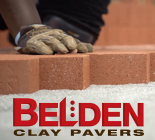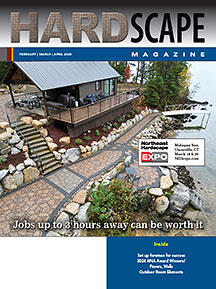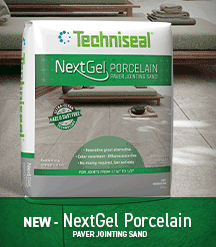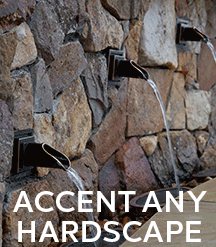Construction articles
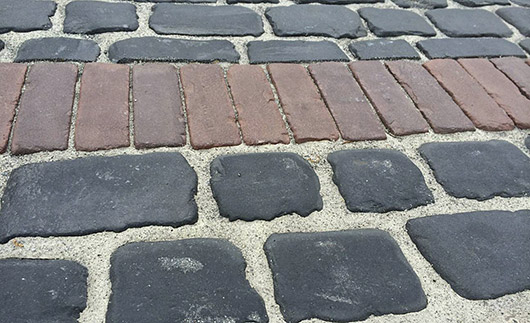
All-in-one products such as Sable Marco’s EV Evolution polymeric sand are suitable for all types of paver joints 1/8” to 4” wide in situations that range from high traffic vehicular applications, overlays, pool decks, sloped areas, etc.
Demystifying polymeric sand
Installing polymeric sand isn’t a problem if you follow these tips for learning about it and applying it correctly.
By Blake TrockiPolymeric sand has come a long way since it came on the market in the late 1990s. Its strength, quality, color options and ease of use have improved tenfold. Basically, polymeric sand is a mix of a finely graded aggregate and a water-activated binding agent used between the joints of pavers or natural stone.
Today, there are many good products on the market, and for most installers polymeric sand does exactly what it is supposed to do without incident. It mitigates joint maintenance, adds strength, beauty and a finishing touch to projects.
For a few, however, installing polymeric sand creates headaches and frustration. I am here to tell you the good news; it simply does not have to be that way. Hazing and failed joint sand are not normal.
There are best practices and methods which can turn your pain into gain. Here are some things I’ve learned in selling, training contractors and personally installing a lot of polymeric sand.
Choose the right sand for the application
First and foremost, you simply cannot do a proper job without the proper tools. The most important tool is know-how. Without know-how your physical tools are useless. It is the job of the professional to truly understand the material being installed.Not all polymeric sands are the same. I have been on many job sites to look at failed polymeric sand and found the installed sand did not meet the specifications of the application. You can install your sand perfectly but if it's not up to the task for the particular project, failure is likely even if not immediate.
So make sure you have the proper sand for the application. The product must be suitable for all parts of your project including slopes, pool decks, high traffic vehicular areas and pavement exposed to heavy runoff. Make sure the width of the paver joints is within the range of your sand’s capabilities.
Anecdote: Answering the phone with an adult beverage in hand at 5:30pm on a Friday afternoon prevented disaster on a $100,000 driveway. The contractor was installing polymeric sand on a 6,500 sf wide-jointed, wet-cast paver driveway, and he had some questions on wetting the material.
I had him send me some pictures to double check and walked him through the process. A few follow up text messages later and the job was done. I visited the project shortly afterwards, and it was great seeing a beautiful paver driveway done right. The contractor took the time to call, and I made time to help him produce a quality finished product.
I had him send me some pictures to double check and walked him through the process. A few follow up text messages later and the job was done. I visited the project shortly afterwards, and it was great seeing a beautiful paver driveway done right. The contractor took the time to call, and I made time to help him produce a quality finished product.
Get educated
Once you choose the right sand, ensure that everyone who may potentially install it understands how to install that particular product, and understands polymeric sand in general. Do not treat polymeric sand installation like IKEA furniture assembly. Read the instructions; you don't want to have any screws left over.Product formulations and installation processes change over time so I advise even experienced installers to periodically review labels and training resources. I provide my dealers with installation guidelines to pass on to contractors, and I steer them to one of our most valuable tools, an online installation video. Just Google “Evolution Polymeric.” Other manufacturers have similar tools for their products.
Physical tools
Does your crew have the right physical tools and know how to use them? I feel fortunate to have learned so much from so many contractors about developing an effective installation process, including the tools that make it work. I have whittled a list of tools down to what I would call “non-starters,” meaning that if you don’t have these tools for your polymeric sand installation then don’t start.Tools you need:
- Quality adjustable shower head with a setting specifically labeled “shower” so there’s no ambiguity as to what setting they need to use.
- Adequate, non-leaking quality garden hose long enough to reach the farthest corner of the installation. A leaky hose with excessive wear or gaskets missing at the unions can wreak havoc on a polymeric sand installation.
- A push broom and a sorghum broom for detail work.
- A flat shovel combined with a wheelbarrow or 5-gallon bucket to clean up any sand overage. Don't be the guy who leaves a pile of polymeric sand to harden in the grass like a ginormous cow pie.
- A gas powered leaf blower with an adjustable throttle. Backpack style is best.
Beware of site obstacles
Most projects involve things like removing existing soil and dealing with invisible dog fences, gas and electric lines, drainage issues, sprinkler systems and a myriad of other concerns. Effectively working around these obstacles is a key component for a successful install.Ask yourself these site questions before you install:
- Can I easily use a blower on the sand prior to wetting the sand? Is there an outdoor kitchen/bar, entertainment center, pool, etc. where I do not want to blow sand.
- Are there any structures like walls that will trap the sand when I blow it?
- Is there a place to blow any standing water left after wetting the sand?
- Is there a sprinkler system with an automatic timer on that could make a mess?
- Does the customer have a washing machine, pool pump or drainage system that will put large quantities of water on the project?
- Do the customer’s kids like to play with the garden hose?
Do not leave the sand installation to a novice. From what I’ve seen, I would estimate that inexperienced installers and DIY homeowners are the source of about 80% of all polymeric sand headaches. There is a learning curve to properly installing polymeric sand . Respect it!
If you have questions don’t hesitate to contact your dealer and manufacturer.
My phone is always on. I am more than happy to help contractors avoid problems before they arise. An ounce of prevention is worth a thousand pounds of polymeric sand pain.
Blake Trocki is a sales representative for Sable Marco, the manufacturer of EV Evolution Polymeric Sand. For more information call (866) 999-4509 or visit SableMarco.com



